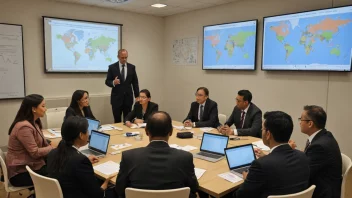Disasters, whether natural or man-made, can devastate communities, leaving behind a trail of destruction and suffering. In the wake of such calamities, humanitarian organizations and governments rush to provide aid and support to affected populations. However, the efficiency and effectiveness of these relief efforts depend heavily on the principles of transparency and accountability. This article delves into the significance of these principles in disaster relief, examining their impact on trust, resource allocation, and long-term recovery.
Understanding Transparency and Accountability
Transparency in disaster relief refers to the open sharing of information regarding aid distribution, funding sources, and decision-making processes. It allows stakeholders, including affected communities, donors, and governmental bodies, to access crucial information about how resources are being utilized. On the other hand, accountability pertains to the responsibility of organizations and individuals involved in disaster relief to justify their actions and decisions. It ensures that they are answerable to the communities they serve and to those who provide support.
The Role of Transparency in Disaster Relief
Transparency plays a vital role in enhancing the effectiveness of disaster relief efforts. Here are several key aspects:
- Building Trust: When organizations are transparent about their operations, it fosters trust among affected populations. Communities are more likely to engage with and support organizations that openly share information about their plans and actions.
- Enhancing Coordination: In disaster scenarios, multiple organizations often operate simultaneously. Transparency helps in coordinating efforts, reducing duplication of services, and ensuring that the needs of the community are met efficiently.
- Promoting Donor Confidence: Donors are more inclined to support organizations that demonstrate transparency in their financial dealings. When donors can see how their contributions are being allocated, they feel more secure in their investments.
- Facilitating Effective Monitoring: Transparent processes enable independent monitoring and evaluation of relief efforts. This oversight ensures that resources are used effectively and that organizations remain accountable for their actions.
Accountability in Action
Accountability mechanisms in disaster relief can take various forms, including:
- Feedback Mechanisms: Establishing channels for feedback from affected communities allows them to voice their concerns, suggestions, and experiences regarding the relief efforts. This feedback can be used to improve services and address any shortcomings.
- Regular Reporting: Organizations should provide regular updates on their activities, expenditures, and outcomes. This information should be accessible to all stakeholders, ensuring that everyone is informed about the progress of relief efforts.
- External Audits: Independent audits of financial and operational practices can help verify that resources are being used appropriately. These audits can identify areas for improvement and reinforce accountability.
Challenges to Transparency and Accountability
Despite their importance, achieving transparency and accountability in disaster relief is not without challenges:
- Complexity of Operations: Disaster relief often involves multiple agencies and stakeholders, making it difficult to maintain clear lines of communication and accountability. The sheer scale of operations can lead to confusion and a lack of oversight.
- Cultural Barriers: In some regions, cultural norms may discourage open communication or public criticism of organizations. This can hinder the establishment of transparent practices and accountability mechanisms.
- Resource Constraints: Many organizations operate under tight budgets and time constraints during disasters. This pressure can lead to shortcuts in transparency and accountability, as organizations prioritize immediate relief over long-term practices.
Case Studies: Successful Implementation of Transparency and Accountability
Examining successful case studies can provide valuable insights into how transparency and accountability can be effectively implemented in disaster relief:
Case Study 1: The Haiti Earthquake Response
After the devastating earthquake in Haiti in 2010, numerous organizations mobilized to provide aid. One notable example was the collaboration between various NGOs that established a centralized database of aid distribution. This database allowed organizations to track what resources were being delivered and where, minimizing duplication and ensuring that the needs of the affected communities were met.
Case Study 2: The Philippines Typhoon Haiyan Response
In the aftermath of Typhoon Haiyan in 2013, the Philippine government and international organizations implemented a comprehensive accountability framework. They held regular public meetings to report on relief efforts and gather feedback from affected communities. This open dialogue not only improved trust but also enabled organizations to adapt their strategies based on community input.
How Individuals Can Promote Transparency and Accountability
Individuals play a critical role in advocating for transparency and accountability in disaster relief. Here are several ways to get involved:
- Educate Yourself: Understanding the principles of transparency and accountability will enable you to advocate for these practices effectively. Stay informed about ongoing disaster relief efforts and the organizations involved.
- Engage with Organizations: Reach out to humanitarian organizations and inquire about their transparency practices. Encourage them to adopt measures that enhance accountability, such as regular reporting and feedback mechanisms.
- Support Advocacy Groups: Many organizations focus on promoting accountability in humanitarian aid. Supporting these groups through volunteering or sharing their messages can amplify their impact.
- Promote Community Involvement: Encourage affected communities to participate in decision-making processes related to disaster relief. Their voices are crucial in ensuring that aid meets their needs and that organizations remain accountable.
Conclusion
Transparency and accountability are not just buzzwords in the realm of disaster relief; they are fundamental principles that can significantly influence the effectiveness of humanitarian efforts. By fostering trust, enhancing coordination, and promoting donor confidence, these principles ensure that resources are utilized efficiently and ethically. While challenges exist, the successful implementation of transparency and accountability in various disaster scenarios demonstrates that it is possible to create a more responsible and responsive humanitarian landscape. As individuals, we have the power to advocate for these principles, ensuring that disaster relief efforts are not only effective but also just and equitable for all communities.






